Your Child Is Capable Of More Than You Can Imagine:
WHEN KIDS HAVE CHORES, IT BUILDS CONFIDENCE
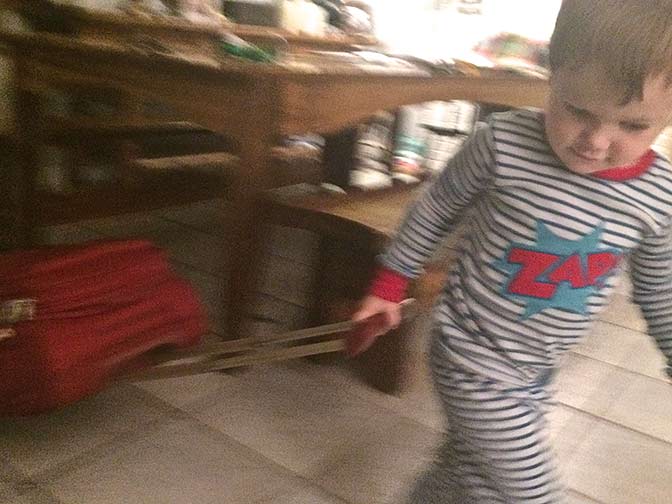
Montessori theory says kids should help with the chores because it gives them confidence. Kids at the age of three are capable of helping with dinner, setting the table, helping put dirty clothes in the washing machine, setting the dinner table, picking up their toys and even dressing themselves. Will all these be done correctly? No. But it's a start. And it's important not to redo what they've just done in front of them where they will consider what they just did, nullified. Just encourage them and praise them for their efforts. Kids can even pack their own suitcase before a trip to see the grandparents. You can repack once they go to sleep. Otherwise, who knows what you'll find in that suitcase when you arrive at grandma's.
CULTURES DEVELOP WHEN PEOPLE FIND WAYS TO PLAY, MAKE, AND SHARE.
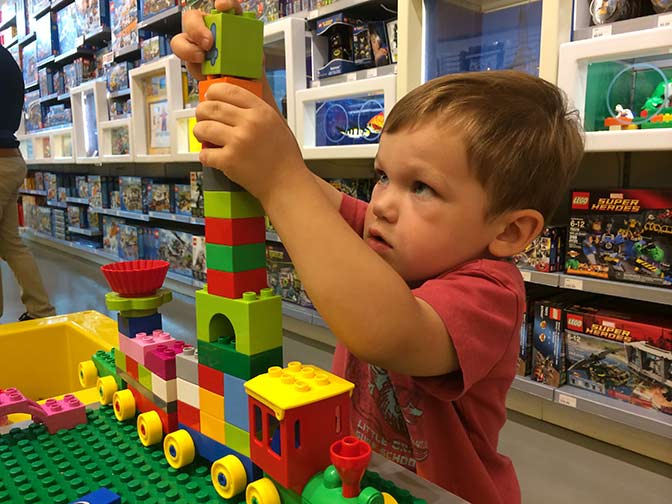
“Dad, can we stop at the Lego Store…please?” “Conor, we need to go. Come on now,” I plead but it’s no use. They’re Legos and all those colors would stop even Stevie Wonder if he were walking by. And so we go in. And my 3-year old heads for the Duplos and starts building. And other kids come over and start building, too. And before long, they are all playing together. They’re not making friends with each other. They are automatically friends. It’s magic. They’re building together, sharing ideas, sharing shapes and laughing. Hard to walk by all that when I know it’s so much more than a Lego Store.
Here’s an interesting research paper created by those at the LEGO Foundation that begin to explain what’s really going on:
http://www.legofoundation.com/en-us/research-and-learning/foundation-research/cultures-of-creativity/
Here’s an interesting research paper created by those at the LEGO Foundation that begin to explain what’s really going on:
http://www.legofoundation.com/en-us/research-and-learning/foundation-research/cultures-of-creativity/
WHY ARE CHILDREN SCARED OF THE DARK?
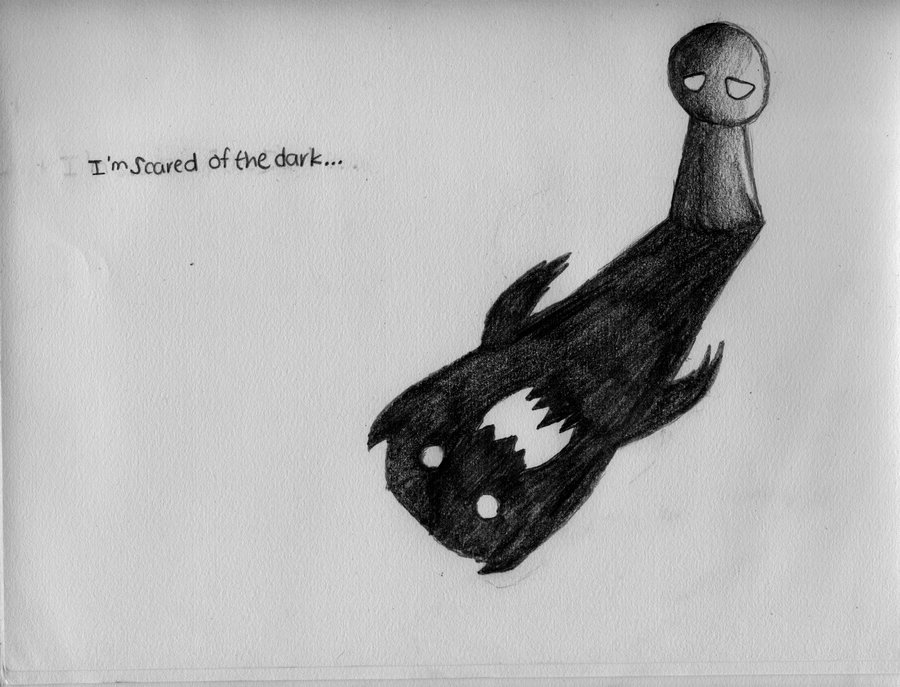
Fear of the dark is common at the age of about three years old. It occurs suddenly because children’s imagination starts to come alive at two and is often in full swing by the age of three.
Once the imagination kicks into gear, it’s difficult for a child of this age to tell the difference between fantasy and reality. And in the confusion, a dragon or medieval knight that they saw at a party or read in a storybook can find itself alive in their real world. And darkness represents the bridge between that fantasy and reality.
Most kids grow out of this phase in a matter of weeks or months. So be patient and don’t try to rush a child through this phase as it may actually prolong it. Tips include;
1. Don’t tease the child. It’s very real to them and it can prolong the stage.
2. Give one of his stuffed animals the title of ‘protector’ to help him as a friend to accompany him and keep him safe.
3. Use a night light so he can see something and not make up shapes in the void of nothingness.
4. Don’t bring him into your room to make him feel better. It only reinforces that his room isn’t safe after all. Instead, visit his room so he can see the monsters aren’t the problem and mom and dad know this and are willing to go into the room.
(Note: As my son goes through this stage, I learned of this developmental stage from Claire Lerner, LCSW, a child development specialist.)
Once the imagination kicks into gear, it’s difficult for a child of this age to tell the difference between fantasy and reality. And in the confusion, a dragon or medieval knight that they saw at a party or read in a storybook can find itself alive in their real world. And darkness represents the bridge between that fantasy and reality.
Most kids grow out of this phase in a matter of weeks or months. So be patient and don’t try to rush a child through this phase as it may actually prolong it. Tips include;
1. Don’t tease the child. It’s very real to them and it can prolong the stage.
2. Give one of his stuffed animals the title of ‘protector’ to help him as a friend to accompany him and keep him safe.
3. Use a night light so he can see something and not make up shapes in the void of nothingness.
4. Don’t bring him into your room to make him feel better. It only reinforces that his room isn’t safe after all. Instead, visit his room so he can see the monsters aren’t the problem and mom and dad know this and are willing to go into the room.
(Note: As my son goes through this stage, I learned of this developmental stage from Claire Lerner, LCSW, a child development specialist.)
WHAT ARE NIGHT TERRORS
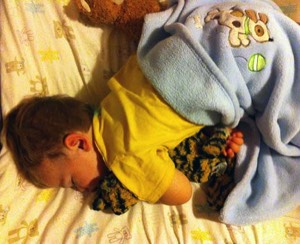
Night terrors are a phenomenon that occurs when a child begins screaming in the middle of the night for no apparent reason. If you look closely, they’re still asleep. The screaming is accompanied with thrashing of their bodies. They flail around and are crying uncontrollably. It is a frightful thing to see.
It is very hard to wake a child during this activity as they are in a deep, deep sleep. And research shows its better not to wake them up because it can take even longer to calm then down and get them back to sleep. We have dealt with numerous episodes of night terror from our 2-year old from as early as when he was 8 months old. Before reading about this thing called, ‘night terrors’ we didn’t know what it was and tried to wake our child up. Nothing seemed to work except two things; if I took him outside, the change in temperature and climate seemed to change his behavior somewhat. He started to wake up. The other thing that worked three times in a row then stopped working was a wet face cloth to his foot. This actually got him to stop crying and settle down. But this no longer works and I’m not sure why.
Night terrors are real and we’ve talked to our pediatrician about it who worked at Children’s Hospital in Boston for 10 years. She said it is a real phenomenon and there is no treatment for it. She said to just make sure that the child isn’t hurting themselves as they flail around and wait it out. She said it’s not even a good idea to wake them up as they won’t remember what happened anyway, plus its very, very difficult to wake them up anyways.
And so our son continues to have night terrors and I continue to try and wake him up because I can’t stand to see him so scared. But right now, all I can do is hold him in my arms until the night terror ends and he goes back to sleep. Research shows this can last until he’s 12 years old. Crap.
For more information on night terrors, visit; kids health - night terrors
It is very hard to wake a child during this activity as they are in a deep, deep sleep. And research shows its better not to wake them up because it can take even longer to calm then down and get them back to sleep. We have dealt with numerous episodes of night terror from our 2-year old from as early as when he was 8 months old. Before reading about this thing called, ‘night terrors’ we didn’t know what it was and tried to wake our child up. Nothing seemed to work except two things; if I took him outside, the change in temperature and climate seemed to change his behavior somewhat. He started to wake up. The other thing that worked three times in a row then stopped working was a wet face cloth to his foot. This actually got him to stop crying and settle down. But this no longer works and I’m not sure why.
Night terrors are real and we’ve talked to our pediatrician about it who worked at Children’s Hospital in Boston for 10 years. She said it is a real phenomenon and there is no treatment for it. She said to just make sure that the child isn’t hurting themselves as they flail around and wait it out. She said it’s not even a good idea to wake them up as they won’t remember what happened anyway, plus its very, very difficult to wake them up anyways.
And so our son continues to have night terrors and I continue to try and wake him up because I can’t stand to see him so scared. But right now, all I can do is hold him in my arms until the night terror ends and he goes back to sleep. Research shows this can last until he’s 12 years old. Crap.
For more information on night terrors, visit; kids health - night terrors
HAVING TROUBLE UNDERSTANDING YOUR TODDLER’S LANGUAGE SKILLS?
Hearing children begin to learn language skills is endearing and difficult at the same time. My 17-month old son says the word, 'truck' and it sounds like 'cock' which is super embarrassing when he's looking out the window of a plane and pointing past the man located in the window seat. But other times, he says words like, "Bacom" and I have no idea what he is saying. I repeat the word and he seems happy but when he waits for me to do something about his nonsensical request, I don't do anything and he gets upset .
Researchers say that during this transitional time in a toddlers life, that it's better to guess at what they're saying than to tell them that you don't understand them. This will cause them to be more stressed and frustrated. You'll be surprised at how often you actually guess what they're saying. After all, you've heard them since the very beginning of their speech development. After about the age of three, if you still don't understand them, it's a good idea to ask the pediatrician if they'd recommend a speech therapist. But until then, it's common for kids to leave the first letter off of a word, or the ending off of a word. Enjoy it, record it, post it on-line for a good laugh because this phase of their life changes all too quickly.
Researchers say that during this transitional time in a toddlers life, that it's better to guess at what they're saying than to tell them that you don't understand them. This will cause them to be more stressed and frustrated. You'll be surprised at how often you actually guess what they're saying. After all, you've heard them since the very beginning of their speech development. After about the age of three, if you still don't understand them, it's a good idea to ask the pediatrician if they'd recommend a speech therapist. But until then, it's common for kids to leave the first letter off of a word, or the ending off of a word. Enjoy it, record it, post it on-line for a good laugh because this phase of their life changes all too quickly.
WHAT IS CONJUNCTIVITIS OR “PINKEYE”?
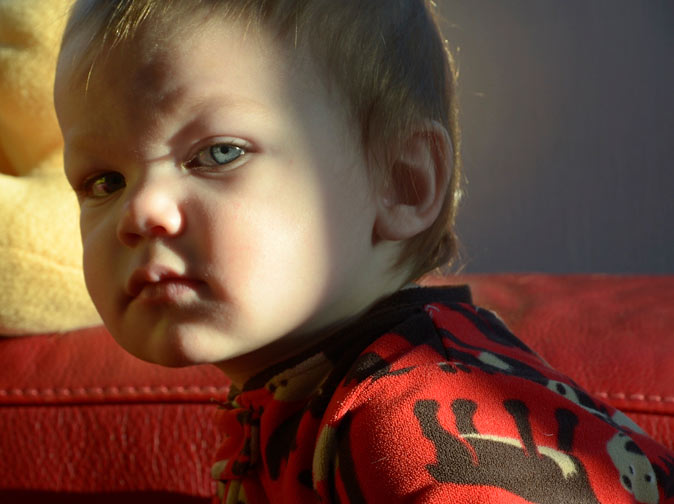
What exactly is conjunctivitis? It's a virus (or bacteria) that causes inflammation of the clear membrane that covers the white part of your eye. It's highly contagious and schools don't like it.
How is it spread? Conjunctivitis is passed from one person to the next after the infected person rubs their eyes then touches another person or touches something that the next person then touches. That's really the only way you can spread pinkeye. It turns your eyes red for about 4 days and makes them really itchy. Like having sand in your eyes. It makes my eyes hurt just writing this. It usually goes away on its own but it's still important to see a doctor because there are side effects that can occur with untreated conjunctivitis and you don't want that to happen.
We took Conor to the doctor within 2 hours of the school notifying us. A common secondary condition that can occur with pinkeye is an ear infection. So the doctor checked Conor's ears and sure enough, he had an ear infection. So now we have a mild antibiotic for his ears and eye drops for his eyes. Giviing a baby eye drops is like telling an elephant to tiptoe through a petunia patch; it ain't gonna happen. The trick is to give him eye drops while his eyes are still closed in a horizontal position and when he opens his eyes, the liquid runs into the eyes and it feels good and you're a hero. Bam!
How is it spread? Conjunctivitis is passed from one person to the next after the infected person rubs their eyes then touches another person or touches something that the next person then touches. That's really the only way you can spread pinkeye. It turns your eyes red for about 4 days and makes them really itchy. Like having sand in your eyes. It makes my eyes hurt just writing this. It usually goes away on its own but it's still important to see a doctor because there are side effects that can occur with untreated conjunctivitis and you don't want that to happen.
We took Conor to the doctor within 2 hours of the school notifying us. A common secondary condition that can occur with pinkeye is an ear infection. So the doctor checked Conor's ears and sure enough, he had an ear infection. So now we have a mild antibiotic for his ears and eye drops for his eyes. Giviing a baby eye drops is like telling an elephant to tiptoe through a petunia patch; it ain't gonna happen. The trick is to give him eye drops while his eyes are still closed in a horizontal position and when he opens his eyes, the liquid runs into the eyes and it feels good and you're a hero. Bam!
WHEN DOES A BABY START TO CRAWL?
According to the Baby Center in the UK, a baby will start to crawl soon after it's able to sit up and support its neck. This is usually around 7 to 10 months old. Once they find a way to get up on all fours, things just start to happen. And crawling is a result. My boy thinks he can fly, surf and crawl. All of which still need more work. After all, he's just 5 months old.
WHEN CAN A CHILD RECOGNIZE HIS/HER DAD?
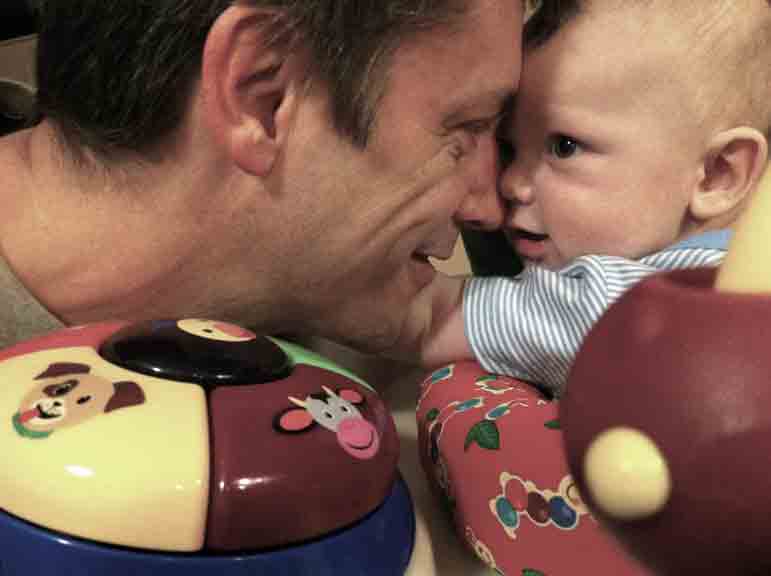
I’m disappointed that I can not find any studies on what age a child is most likely to be when recognizing his father. All the research I can find is on when a child can recognize its mother. So us dads will have to guesstimate based on the findings of mothers.
Some researchers think that newborns can recognize their mothers as soon as they are born. Studies have certainly shown that babies recognize the smell of their mothers. Other studies show that voice recognition is a major factor in an infant knowing his/her mother. Visual recognition is thought to take a few weeks, according to Howard Reinstein, a pediatrician and spokesman for the American Academy of Pediatrics. By 6 months, a baby knows who its mother is and when she’s not around. The infant can even recognize a picture of its mother.
So when does a baby recognize her/his dad? Without real studies, I think if a baby can recognize its mother’s voice, then it ought to be able to recognize his/her dad’s voice provided the dad is around the baby for a healthy amount of time. I would assume if the dad is feeding the baby while talking or singing, that the same neurons in the baby’s brain that help it recognize mommy will also help it to bond to daddy. As for the visualization of mommy within weeks, I also think a baby would recognize daddy by the same brain functions.
But the sad thing is that scientists have not been as interested in what the baby thinks of his/her dad in the same way that they are curious about the mother-child bond. So us dads will have to just keep on loving our children as men have done for eons before scientists could tell mothers that their child was bonding with them within minutes of delivery. And dads could go pound sand because it’s not important where they stand in the miracle of childbirth.
Some researchers think that newborns can recognize their mothers as soon as they are born. Studies have certainly shown that babies recognize the smell of their mothers. Other studies show that voice recognition is a major factor in an infant knowing his/her mother. Visual recognition is thought to take a few weeks, according to Howard Reinstein, a pediatrician and spokesman for the American Academy of Pediatrics. By 6 months, a baby knows who its mother is and when she’s not around. The infant can even recognize a picture of its mother.
So when does a baby recognize her/his dad? Without real studies, I think if a baby can recognize its mother’s voice, then it ought to be able to recognize his/her dad’s voice provided the dad is around the baby for a healthy amount of time. I would assume if the dad is feeding the baby while talking or singing, that the same neurons in the baby’s brain that help it recognize mommy will also help it to bond to daddy. As for the visualization of mommy within weeks, I also think a baby would recognize daddy by the same brain functions.
But the sad thing is that scientists have not been as interested in what the baby thinks of his/her dad in the same way that they are curious about the mother-child bond. So us dads will have to just keep on loving our children as men have done for eons before scientists could tell mothers that their child was bonding with them within minutes of delivery. And dads could go pound sand because it’s not important where they stand in the miracle of childbirth.
WHEN CAN A CHILD LEARN TO PLAY THE PIANO?
From day one, babies can hear so it's important to talk and play music for your baby from the beginning. Piano music, orchestra music, operas, piano and violin concertos, all help in a baby's brain development.
How your baby's brain develops musically will depend on the kind of music he or she hears. Older classical music contain more basic chord structures and harmonies that are naturally recognized by the brain. (Think of Beethoven, Mozart and Tchaikovsky.) Then more complex chords and dissonances were added later on as we became accustomed to them over time. (Think Hindemith, Ligeti and Barber.) So older classical is better for babies because they offer more stimulative logic and less dissonance. Piano music is especially appropriate because, if they eventually take piano lessons, they will have a higher level of understanding of music they heard as a baby.
Below the age of 3, most kids' hands are too small to play the piano and the brain and body may not have developed enough to understand the concepts of music.
Between the ages of four and twelve, children have an excellent ability to learn musical education. Especially if they've been listening to appropriate music up to now. Their minds are malleable and they have an extraordinary ability to understand the piano. Even learning to read music is easy. In fact, musical notation is easier to learn than any alphabet. Often, the ability to learn is only limited by the teacher's talents, not the child's.
Between the ages of 13 and 19 is also a great time to learn and kids can still become concert level pianists. The brain is still progressing greatly until the age of 16, where it begins to slow down slightly at 19. After this age, it will be more difficult to memorize and play and informal performances will be the best that most can hope for.
Did you know that you can start talking with your baby when he is only 8 or 9 months old? Perhaps I've been living under a rock for the last 40 years but I wasn't aware. This video made a believer out of me.
Imagine an infant being able to sign words like; airplane, bird, ball, blanket cat, cup, mommy and daddy, dog, done, drink, eat, goodnight, happy, help, hurt, i love you, milk (looks like a kid milking a cow), nap, no, outside, please (shocking), sit, star, thank you (can never learn too early) and water to name just a few.
The trick is to be patient. The idea is make it fun and not get frustrated if it's not happening at a pace to your liking. It's better to think of the concept as a bonus. If the child gets it, 'cool', if not, 'what the heck'. (It's the same with training dogs, actually.) Eventually, the baby will get it. It just happens that way. So chill. You start signing to them at 6 or 7 months and after 8 or 9 months, it starts to click and they'll start signing back. It will probably look a little sloppy at first but you'll know they are trying to say something when they start using their hands deliberately. Especially when they learn 'milk.' Looks just like a farmer squeezing an udder.
The trick is to make signing everyday words a habit. The more often you do it, the quicker they'll catch on. If you only do it once, it won't be enough for them to understand. It's through repetition that kids (and adults) pick up any new habit.
Also, don't stop talking in favor of sign language. They're also learning to talk by listening to you, so do both. It's as easy as walking and chewing gum at the same time.
And lastly, share your signs with the grandparents, the babysitter and the mailman so they can all communicate with the baby.
Imagine an infant being able to sign words like; airplane, bird, ball, blanket cat, cup, mommy and daddy, dog, done, drink, eat, goodnight, happy, help, hurt, i love you, milk (looks like a kid milking a cow), nap, no, outside, please (shocking), sit, star, thank you (can never learn too early) and water to name just a few.
The trick is to be patient. The idea is make it fun and not get frustrated if it's not happening at a pace to your liking. It's better to think of the concept as a bonus. If the child gets it, 'cool', if not, 'what the heck'. (It's the same with training dogs, actually.) Eventually, the baby will get it. It just happens that way. So chill. You start signing to them at 6 or 7 months and after 8 or 9 months, it starts to click and they'll start signing back. It will probably look a little sloppy at first but you'll know they are trying to say something when they start using their hands deliberately. Especially when they learn 'milk.' Looks just like a farmer squeezing an udder.
The trick is to make signing everyday words a habit. The more often you do it, the quicker they'll catch on. If you only do it once, it won't be enough for them to understand. It's through repetition that kids (and adults) pick up any new habit.
Also, don't stop talking in favor of sign language. They're also learning to talk by listening to you, so do both. It's as easy as walking and chewing gum at the same time.
And lastly, share your signs with the grandparents, the babysitter and the mailman so they can all communicate with the baby.
When can a baby learn to swim?
A baby can be born underwater and automatically know to hold its breath. It even knows how to swim already. But within a few weeks, it forgets how and has to be retaught. It seemed to me that if a baby already knew to swim and you stuck with it, that the child would always know how to swim but I’ve been assured this will not work.
Here’s the science of babies learning to swim;
Some infants as young as 6 months -10 months old can learn to hold their breath when dipped underwater. By 12 months of age, some will be able to swim 5 seconds between two adults.
Some toddlers as young as 19 months-24 months old can begin to learn to jump off the side of the pool, turn around and swim back to the side. By the age of 25 months old, a great spurt in endurance and kicking ability can occur.
Some experienced toddlers by the age of 28 months-36 months can learn to come back up for a breath.
Some 36 month-4 year olds will begin to back float. The vast majority of infants and toddlers are not comfortable on their backs until at least 3 years old. Children often enjoy swimming under the surface at this age.
Here’s the science of babies learning to swim;
Some infants as young as 6 months -10 months old can learn to hold their breath when dipped underwater. By 12 months of age, some will be able to swim 5 seconds between two adults.
Some toddlers as young as 19 months-24 months old can begin to learn to jump off the side of the pool, turn around and swim back to the side. By the age of 25 months old, a great spurt in endurance and kicking ability can occur.
Some experienced toddlers by the age of 28 months-36 months can learn to come back up for a breath.
Some 36 month-4 year olds will begin to back float. The vast majority of infants and toddlers are not comfortable on their backs until at least 3 years old. Children often enjoy swimming under the surface at this age.
Bonding With Your Kid
Being a dad is not instinctual or intuitive. It is something that must be learned. The cool part is that we get to 'choose' the kind of dad we want to be. We're not genetically inclined to be the kind of dad our dad was to us. Or his dad was to him. We get to be our own kind of dad. Snoop Dog has five kids and while I never thought of him as the kind of dad that would give his kids the time of day, I was wrong. His kids love him and Snoop is here to give you five tips on being a dad.
Dyslexia is a reading and learning disability but has absolutely nothing to do with a child's intelligence level. In fact, studies show that many go on to become great writers, poets, politicians, musicians and bloggers. (Okay, I threw in the last one. I also suffer from mild dyslexia.) It affects one in every five children in the United States. Here are some symptoms that one may have dyslexia;
- difficulty in learning to read
- difficulty in arranging letters, words or numbers
- difficulty in gauging direction
- difficulty in deciphering sequences
- poor handwriting
- poor organizational abilities
- poor memory about non-relevant facts
Now, it's possible to recognize signs of dyslexia in toddlers 1-3 yrs old;
- slow speech learning skills
- ear infection
Signs of a dyslexia in children 4-5 years old;
- Switching from left to right hand when drawing, coloring, or writing
- inability to tie shoe laces
- difficulty in uttering words that rhyme
- difficulty in learning to write
- problem in pronouncing the letters M,N,R,and L
- stuttering
Signs of dyslexia in children 6-12 years old;
- trouble with spelling and handwriting
- trouble with telling time
- struggles with math problems or concepts
- mispronunciation of common words
- trouble remembering a series of numbers
Signs of dyslexia in high school teenagers;
- Poor writing and spelling skills
- difficulty in expressing themselves due to limited vocabulary
- Difficulty in mastering new language
- Poor grades in school
This is a fascinating topic and because it is so prevalent, there are tons of books and publications on this topic. This is a summary from an interesting online article; www.thepowerofdyslexia.com/dyslexia/
- difficulty in learning to read
- difficulty in arranging letters, words or numbers
- difficulty in gauging direction
- difficulty in deciphering sequences
- poor handwriting
- poor organizational abilities
- poor memory about non-relevant facts
Now, it's possible to recognize signs of dyslexia in toddlers 1-3 yrs old;
- slow speech learning skills
- ear infection
Signs of a dyslexia in children 4-5 years old;
- Switching from left to right hand when drawing, coloring, or writing
- inability to tie shoe laces
- difficulty in uttering words that rhyme
- difficulty in learning to write
- problem in pronouncing the letters M,N,R,and L
- stuttering
Signs of dyslexia in children 6-12 years old;
- trouble with spelling and handwriting
- trouble with telling time
- struggles with math problems or concepts
- mispronunciation of common words
- trouble remembering a series of numbers
Signs of dyslexia in high school teenagers;
- Poor writing and spelling skills
- difficulty in expressing themselves due to limited vocabulary
- Difficulty in mastering new language
- Poor grades in school
This is a fascinating topic and because it is so prevalent, there are tons of books and publications on this topic. This is a summary from an interesting online article; www.thepowerofdyslexia.com/dyslexia/
Experts say a child can learn to dance as soon as they're out of diapers. Dance can help your kids grow, exercise, learn and socialize with others. And what happens when they can dance like Michael Jackson? Only Warren Buffet and Donald Trump know.
Perhaps it's just me but I thought that eight years of breastfeeding seemed a bit long. So I looked it up and discovered that the World Health Organization recommends that infants nurse, here and worldwide, for a minimum of two years. An anthropologist expert in infant nutrition, weighed in and suggests the minimum weaning age for humans is somewhere between 2 1/2 and 7 years. Well slap my baby's diaper, I guess it's not so old after all. Still, I think our baby will be introduced to a sippy cup at about 2 years old. A beer bottle at age 9. Read more...